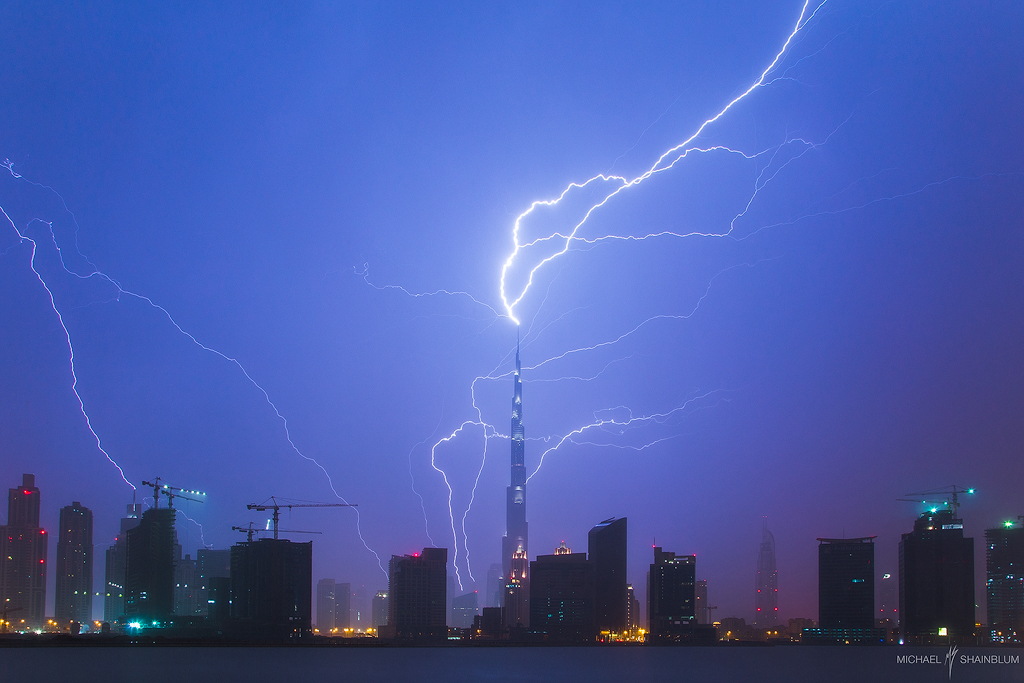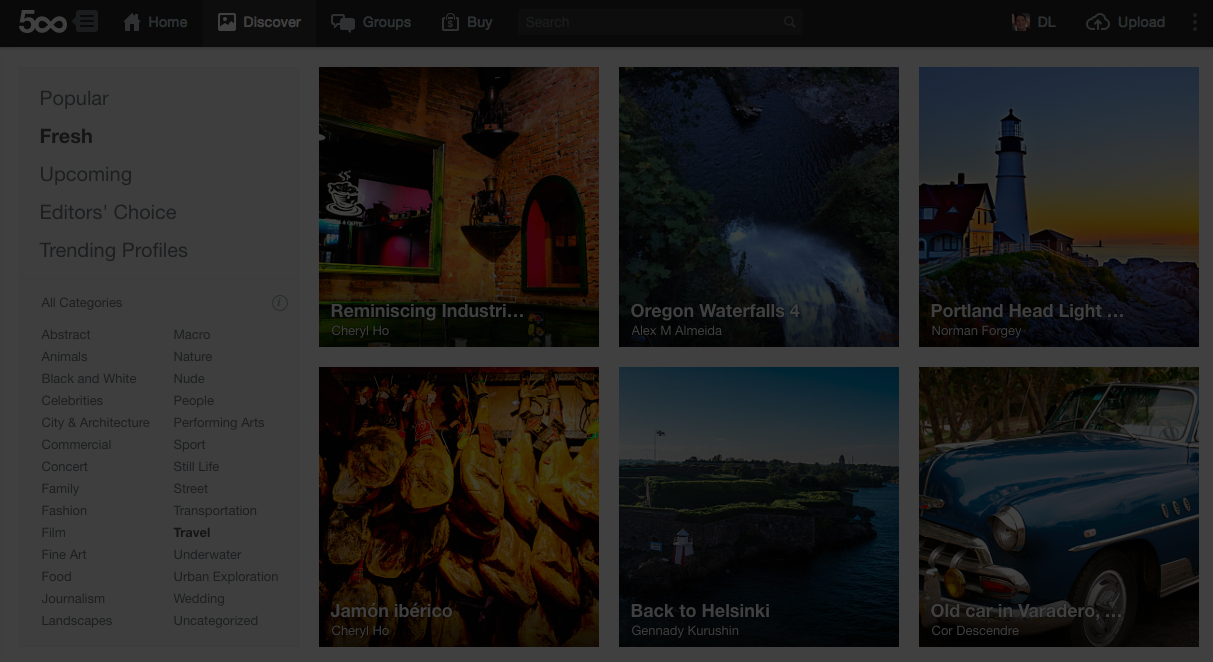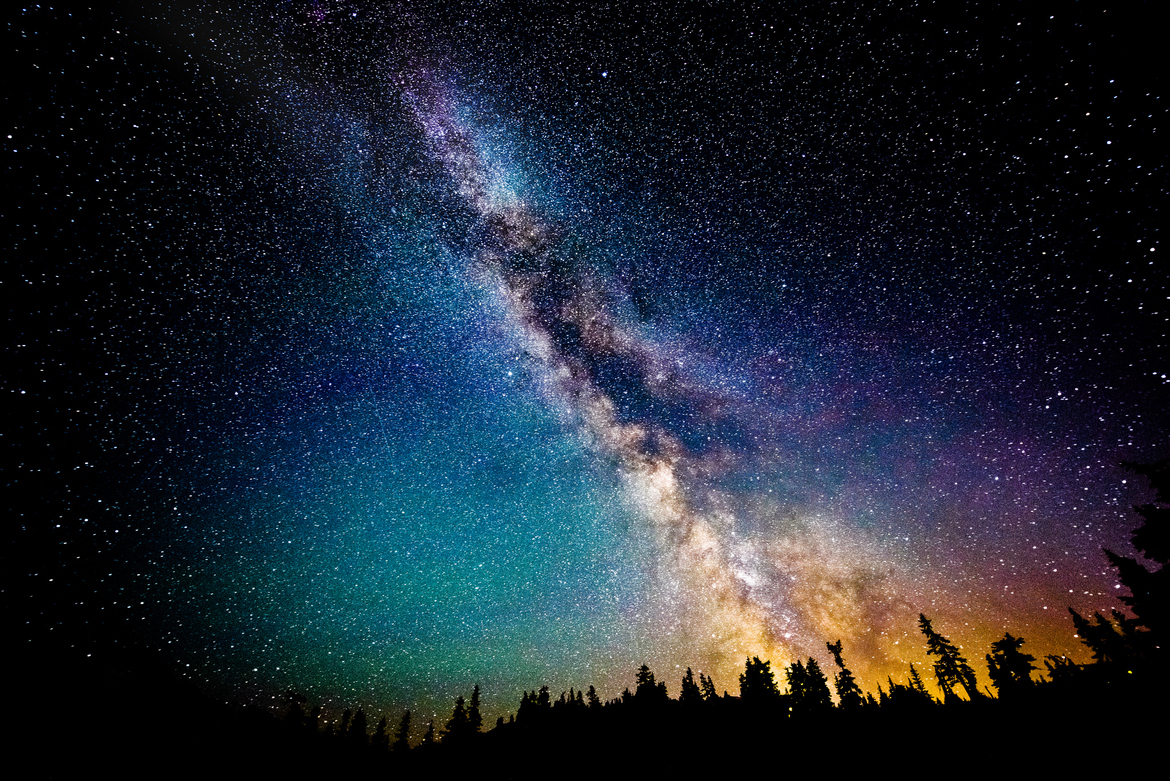Michael Shainblum is a dedicated and charismatic photographer, perhaps most famous for his captivating Milky Way photos. Definitely a favorite amongst the 500px community, we caught up with him via Skype during his trip to Dubai to talk about photography, the evolution of digital gear, light pollution, and his “Tesla Tower” photograph that has been making its way through the media.
Hi Michael! Could you share with us what sparked your interest in photography?
I’ve always really been interested in art. I can’t really pinpoint why. Ever since I was a kid I’ve always wanted to create and build. It started off early on with me drawing and painting, building legos, and whatever kids do. That slowly evolved through different media types like graphic art, and digital image. That went on to digital photography, and then video and timelapse. But the main spark comes from the need to create and build.
Do you think the need to create lives in everyone?
I think it’s definitely an individual thing. I know people who can go their entire lives without taking a single picture and be content. But I think the thing that’s so awesome is that everyone has a skill in life. Whether it be an artistic skill, or a skill for writing, some form of knowledge or engineering.
I’ve found that the thing that drives me is art. I always want to do something that’s inspiring or that will inspire people to go out and do something. I want to make people happy. I realized that through photography, timelapse, and teaching photography and timelapse I’m able to inspire people and make people happy. That’s where a lot of that drive comes from.
I’ve also realized that even if I never shared a photo in my entire life I would still want to take photos because it’s what I enjoy doing. There isn’t a super logical reason for that need to create. It’s just there, that passion for photography. It’s what I enjoy, it’s what I love, it’s what I live for.
Did you get into video and timelapse production after you discovered photography?
Before I could afford a video camera, I realized that while doing photography, I could click the shutter [on my camera] a bunch of times, walk around with it and make stop motion videos. That was essentially my bridge into video production and to timelapse.
I started using Canon 5D Mark IIs and video cameras and just filming random stuff – whether it was skateboarders, or surfers, or flowers in the sunset. Then I started to do real timelapse production and real video production. I still continued to do photography the entire way through, but I definitely think photography was the stem of that growth.
There’s a lot of debate right now around digital photography and videography and the evolution between the two. You’ve obviously already made the jump. What do you think that means for the photography community, in general? You can now take a high res, HD video and extract a still from it and turn it into a photo. Do you think that is making way for a decline in photography?
There’s a lot of arguments within that, and a lot of perspectives. I find myself in the middle of it all. Especially nowadays with cell phones – everyone has iPhones, there’s a new Nokia that has 40 megapixels… Photography is becoming so accessible that everyone is starting to think they are now a photographer because they have that accessible equipment. There’s a lot of people saying, “photography’s over,” or “video’s over,” or whatever, because everybody has the ability to own a decent camera.
I think what is going to hold photography and art and video regardless of where the equipment goes – the equipment could go in any direction right now – and it’s going to be up to the person’s creativity and their passion and innovation and their experience to be able to push through that and produce images that are greater than the rest.
I try, with every single image that I take, to boost, not only the image quality, and image capture, sharpness, post-production, but also in the story the image tells. Thinking of interesting ideas that are fresh and even taking something that’s overdone, like shooting the Milky Way.
When I started shooting the Milky Way, honestly, there weren’t many people shooting it. It was a new thing for the most part. All of a sudden, this big group came in and everyone started to get sick of it. Now, every time I go out and shoot the Milky Way I really try to dig deeper to find a more interesting photograph. What else is there about the image? Where is it taken? How is it taken? What’s the story behind it? That’s why, regardless of the way the gear goes, I’m still going to have the passion with the imagery to, hopefully, hold people’s attention.
Regardless of what equipment you’re using, if you have the creativity and you have the ideas, and you’re willing to go out there and spend hours, days, weeks, months, years to produce what you are seeking to produce then I think the gear just comes secondary, you know?
Yeah, I totally agree. I also really love how photography and videos and timelapse are playing a role in how we tell stories nowadays. When you were talking about how every time you go to shoot the Milky Way, even though it is quite popular in photography nowadays, you’re always looking for a story within the image or something that makes it unique. I think that you can see that and it translates into really good photography that you’re seeing today. I really like that you spoke to that.
Thank you. You know, it was really easy to shoot the Milky Way at first. You just go out there and capture it and post it online and half the people are like, “Oh my God!” and the other half are like, “That’s totally fake, man. That’s photoshopped.”
Now it’s such a regular thing. People are so desensitized by the imagery that you need to create something that’s greater than that. The Milky Way is now just a compliment to whatever else you’re shooting. It’s hard, you know. It’s really hard.
Is there a reason why you were particularly drawn to shooting the Milky Way when you first started out?
In the most non-technical, non-interesting way possible, it’s just the coolest thing I’ve ever seen. I’m always trying to capture something that is unknown or unseen, something interesting. I like light rays, I like being above fog, I like crazy colors and sunsets, I just like beautiful things.
I remember the first time I went out to shoot the Milky Way and I was waiting for it to rise above the horizon. I was just sitting there with my friends and I was already shooting timelapse. Then I just started to see these tones over the horizon and I was like, “What is that? Is that the Milky Way??”
As it started to rise above the atmospheric glow and climb into darker skies the whole bulk of the Milky Way became visible. I just sat there for a really long time and stared at it and took pictures. Once I clicked the shutter and got the image back I realized that not only could I see it and the tones and the stars and the shape, but I could see the colors. I could see the oranges popping and I could see the slight blues in the Milky Way… I don’t know, it grabbed me.
It was like, this may not be something that I focus on for the rest of my life, it’s not something that I’ll give all my attention, but it is definitely going to be something that I’ll be interested in for the rest of my life. I’m going to shoot this thing. I don’t think I could ever say, “I’m done with the Milky Way, I’m going to go on to something else.” I need to shoot it. It’s just an awesome experience being out there in a really natural place, in this pitch black darkness, and then the Milky Way rises and your eyes adjust and you can see the subtle details in the landscape and you’re just surrounded by this incredible night sky. I can’t think of anything more interesting to do than that. It’s great. I love shooting it.
I do love shooting everything else, too. I’m drawn to everything. Cityscapes, sunsets, everything is fun. The Milky Way is definitely something that for a long time occupied a bunch of my time and I will continue to shoot for the rest of my life.
You mentioned earlier that when you first started shooting the Milky Way half the people thought they were fake. As a photographer and a creator, does that ever hurt your feelings?
It doesn’t really hurt my feelings… I’ve gotten it a lot for the past two and a half to three years, especially early on. I guess early on it did kind of hurt my feelings. People are going to try and disprove things that they don’t understand, is what I realized. Early on, it was hard for people to understand that if you took your camera, and you increased the exposure time to let in more light, that you’d be able to capture something that you can see with your own eyes.
But not many people really see it. The people who do see it understand. The majority of the people [who see my photographs] aren’t living in New Zealand, Chile, Wyoming… They’re living in a city. They’re from Los Angeles or from Dubai, they’re from wherever and they’re not used to seeing that in the sky. They’re used to seeing a blank sky with very few stars and a bunch of light pollution.
It’s only going to get worse as the years go on and eventually you’ll barely be able to see the Milky Way anywhere. These images are going to look so foreign to people. But it didn’t really hurt my feelings, because I understand, I get it. It’s sad though, it made me more sad than it did upset about the fact that they think my image is fake. It’s like, “Wow, you guys don’t believe that this exists? This is the most amazing thing I’ve ever seen, you’ve got to go out and see it!” “Oh, well we don’t believe that this is real.” You know, that’s the more disappointing thing about it. Lately that hasn’t really been an issue though. When I post a photo of the Milky Way people believe it’s real because they’re seeing it so much.
So maybe it’s even more important that you document the Milky Way while we can still see it.
Yeah, seriously though! Hopefully they create more laws for light pollution. I know that some cities are trying but it’s a big problem. And it’s not a problem that anyone really cares about except us astro-photographers. No one else really gives a shit. People are going to start caring when they start going to their national parks and realizing that there are no stars there.
I get critiqued with a ton of my work. Probably every photo or video I, or anyone else, has ever taken will be critiqued and have people dislike it. It’s just a part of it. I don’t care anymore. I cared at first, but now I just – I don’t care. [Laughs]
Let’s talk about the Burj Khalifa photo itself. In the photo’s description on 500px you actually put a disclaimer that it is “100% real!”
[Laughs] Yeah, people like to think things are fake, like it’s a composite or a stack shot. No, no, no, no. This is what came out of the camera. I added some contrast; I did a little bit of post processing to clean it up, that’s it. That’s all I did to it.
It’s pretty amazing you were able to get that shot. What exactly happened?
We were at this place called the Business Bay. It’s a really awesome spot, a lot of photographers shoot the skyline from there. It was raining – pouring, and we heard one flash of lightning so we decided that we had to go. We didn’t have a car so we had a friend drop us off and we got to this one spot. I knew it would be the perfect place, if there was ever to be a perfect place to capture the lightning hitting this tower, because its perfect symmetry, really nice composition.
So me and Brian, my friend who was with me at the time, walked down to this spot which is just like a giant dirt lot. There was a building with an overhang right before the dirt lot so we set our stuff down under the overhang so that it would stay dry. To get to the water you had to climb over this metal barrier and then a metal railing and then you’re on the water.
It had just stopped raining so it was the perfect opportunity to set up the camera, which I set up shooting timelapse right on the water. I walked back to the overhang with my other camera, looking at the building. We started the timelapses to try to capture the image and we were probably there for at least four hours, just waiting. There was not much happening, just a little bit of rain.
Then these heavy clouds started coming in. The sky started getting hazy and I guessed that the rain was going to come our way. I grabbed an umbrella and I went out to the camera that was by the water. Mind you, I had to go through this giant dirt lot and then over two barriers. So, I’m holding this umbrella over my camera and then it started raining. And then it starts raining harder. My friend decided to grab his camera and head back to the building overhang, but I decided to stay because I wanted the shot.
I was starting to get soaked and as the minutes go by the rain gets heavier and heavier. All the while I’m thinking, it’ll pass, it’ll pass. Instead of passing it got heavier, to the point where I’m literally standing there drenched and my camera is drenched. I looked behind me and the dirt lot is now basically a giant gap of water and mud. The barrier is extremely wet, my tripod’s pretty large and it’s got a nice camera and lens on it, and I realize I can’t get over it with the camera and the umbrella. So I’m getting soaked and experiencing the heaviest rain I’ve experienced in the past two years. I’m from California so it doesn’t rain that much. Then lightning starts to strike and I’m standing there with a metal umbrella next to a metal railing and I’m next to a giant body of water. At that point I was getting really scared that I was in a really bad situation.
All the while, I have a camera back under the building overhang that’s shooting a timelapse of it all. So I’m struggling and not sure if I’m going to come back. I had to make a weird maneuver over the barrier [to get back] and I end up getting just completely soaked. All of my clothing was ruined, my cellphone would have been dead if my passport hadn’t been on the outside of my cellphone in my pocket. The lens was fogged up for two days afterwards. Just this crazy ordeal.
There was this giant flash with a huge crash of thunder. It felt like it was right next to us.
I had just gotten under the barrier and dropped all my stuff and my friend Brian starts yelling at me, “Michael! Michael! We got it! I think we got it!”
He stopped his camera and shows me this photo of the lightning. I check mine and I have these images of the lightning. He was doing timelapse so he got a little timelapse clip of it and I have the photo of it. In that moment we knew we got the shot and it was all good. I was wet and cold and miserable the entire night after that moment, but it was all worth the experience and getting the shot. I didn’t really say all this in the [photo description], but it was pretty intense. It wasn’t like we just stood there for ten minutes and got the shot.
It sounds like it could have been pretty life threatening.
Yeah, I mean we had people telling us, “I’m not sure if people should be going down there…” They had no idea. In that moment, I was like, Uhh I could probably die. I’m standing next to a lot of metal, a lot of water, and this lightning is hitting a ton of buildings. I could die. But it’s alright, I got the shot. [Laughs]
Well, that’s an amazing story. So, final question: Owls – yay or nay?
I love owls! Owls are awesome. I don’t know what else to say about them. I think I shot a few of them when I was in San Diego and it was pretty awesome.
Follow Michael on 500px and show him some love! What is the craziest thing you’ve ever done to get a shot?
















Leave a reply